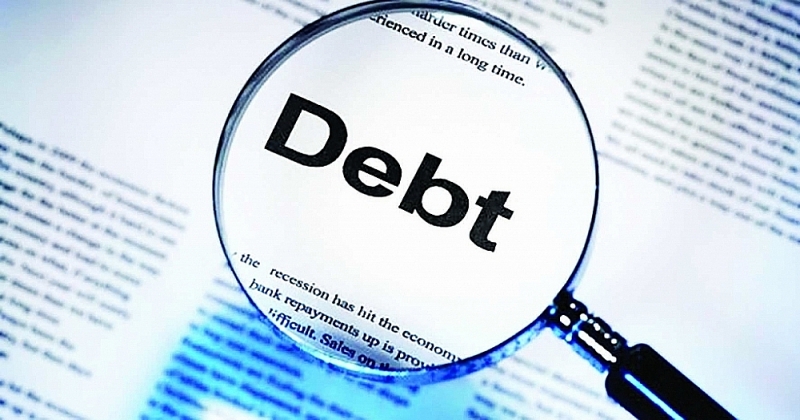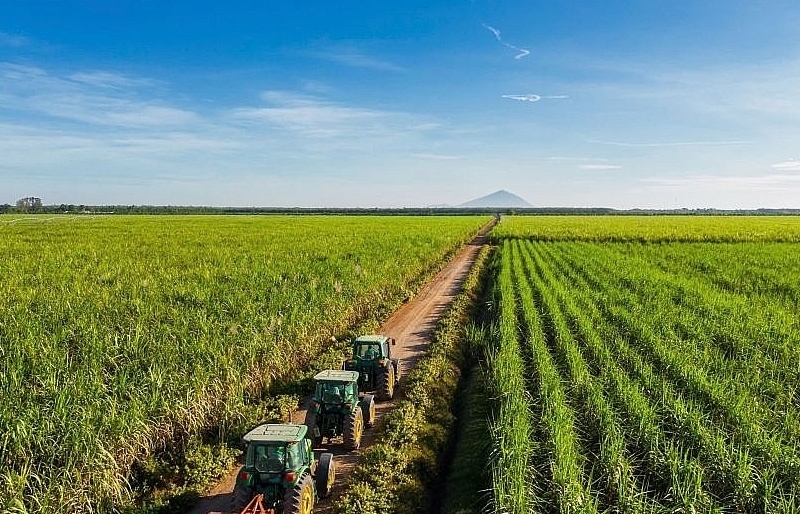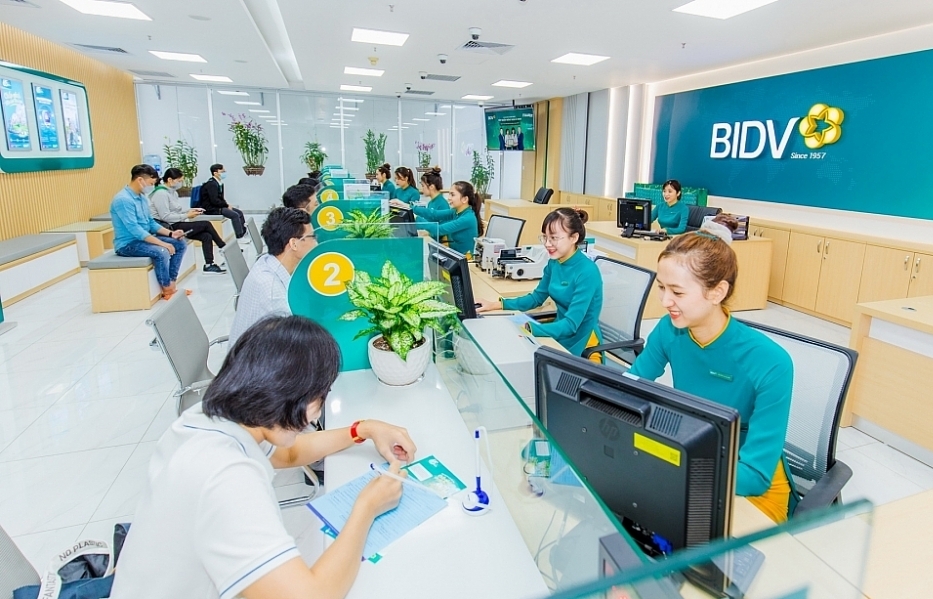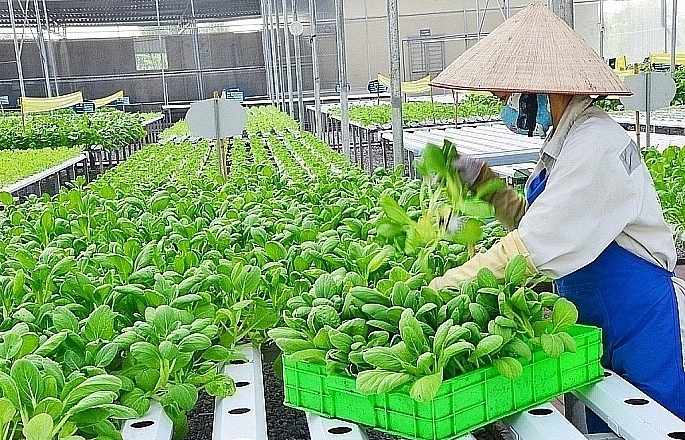Need a solution to open up the bad debt trading market
 |
| Vietnam's bad debt trading market has not yet operated effectively. Source: Internet. |
Debt trading activities "sluggish"
The results from the financial statements of the first quarter of 2023 of 27 banks listed on the stock market show that many banks have a strong increase in bad debt up to 50-80%, in which some banks keep the debt ratio on total outstanding loans up to nearly 23%.
In the report of the State Bank to the National Assembly, the bad debt on the balance sheet is being controlled below 3%, but if the total bad debt on the balance sheet is included, the debt sold to the Asset Management Company (VAMC) has not been handled and potential bad debt of the credit institution system by the end of February 2023 is estimated to account for 5% of the total outstanding debt.
Nguyen Quoc Hung, General Secretary of the Banking Association (VNBA) said that the current situation of bad debts of credit institutions is very worrying, in the context of very difficult businesses, the global economy has a negative impact. Moreover, asset quality declined, but the problem of controlling bad debts of commercial banks faced many difficulties. The sale of collateral, especially large debts that must be sold at market prices, is difficult to implement in the frozen real estate market. Along with that, the legal corridor for debt settlement activities is still not synchronized and unified; difficulties and obstacles in the application of other legal provisions.
In the above context, experts say that if it is determined that bad debt is a separate problem of the banking industry, it is very difficult to handle the consensus of agencies and organizations to handle and recover debts strictly.
Therefore, the Government is submitting to the National Assembly a draft of the Law on Credit Institutions (amended) and will be included in the discussion program at the 5th Session of this 15th National Assembly, in which the bill will supplement added a chapter on bad debt handling. However, many experts are still concerned that bad debt handling is not satisfactory, when the draft focuses on solutions for banks, debt management and asset exploitation companies (AMC) to handle debts themselves, there is no solution to promote the debt trading market.
Data from the National Financial Supervision Commission shows that, in the past 10 years (2012-2022), credit institutions have handled nearly VND 1.57 quadrillion of bad debts, mostly by themselves. Bad debt settlement by selling debt (selling to VAMC and other organizations and individuals) accounted for 26.6%, of which mainly sold to VAMC.
Previously, in October 2021, VAMC announced to put the Debt Exchange Branch into official operation, headquartered in Hanoi. This exchange promises to attract the attention of credit institutions, debt management companies and many investors, thereby creating a vibrant and effective bad debt trading and settlement environment in Vietnam. But since then, the floor's activities are still very "sluggish" compared to the volume of bad debts of banks.
According to VAMC, the Debt Exchange has posted information and listed the debt and secured assets of the debt on its website with a total outstanding balance of about VND 38,000 billion. The floor has successfully implemented consulting contracts with customers with a total value of debts and collaterals reaching nearly 450 billion VND and collecting consulting service fees from customers of about 700 million VND.
Talking about the limitations of the Exchange, Vu Ngoc Minh, Director of the VAMC Debt Exchange, explained that due to the new and unprecedented model, the operation of the Debt Exchange still faces many difficulties and challenges, especially in the attraction of entities to participate in transactions, so specific policies and regulations are needed to encourage and attract many subjects to participate in bad debt trading.
Commenting on Vietnam's bad debt handling, Darryl Dong, senior country officer, International Finance Corporation (IFC) Vietnam said that bad debt is not bad and goes hand in hand with banking activities, a regulatory framework is needed to clean up and process it openly in an open market and have legitimate commercial transactions. Although Vietnam has discussed this issue a lot, so far there has not been a real market transaction of bad debt trading, mainly on the balance sheet between banks and VAMC. Vietnam is still at the "starting line" in opening the market for bad debt trading. The debt trading market is not really open for investors to participate in the market.
Opening the market properly
According to experts from IFC Vietnam, many countries in the region have opened their markets to deal with bad debts. India has a separate law on dealing with bad debts, banks do not need to go through complicated proceedings. The Philippines also offers cash incentives for 3 years to help banks deal with bad debts.
But Darryl Dong once again emphasized that Vietnam may not need such a specific tool but needs to open up its market.
According to this expert, Vietnam needs foreign investors to solve bad debt support. Vietnam needs new regulations that are good enough to attract experts and bad debt investors. This makes investors less interested in not being able to transfer ownership of collateral after buying bad debt. Therefore, Vietnam can create an indirect mechanism to deal with domestic collateral through agents, requiring investors to work with domestic representatives. This will create an effective and fair legal framework, opening a turning point to attract foreign investors to Vietnam.
Also on this issue, economic expert Dr. Le Xuan Nghia said that the most basic and effective solution to deal with long-term bad debts is to develop a bad debt trading market. At the same time, there must be regulations to increase the autonomy and self-responsibility of commercial banks, for example for banks to sell bad debts with a value of only 20-30% like banks in many countries are doing, or Allow the bank to write off the debt if they can afford it. Currently, many banks are selling bad debt as "good debt" or do not dare to sell bad debt at market price for fear of liability.
Up to now, the development of a separate law for dealing with bad debts has been recommended by many experts, but with the current regulations on law-making, it will not be feasible in terms of time, while this is an "urgent" problem of the economy.
Therefore, experts and banks expect that including a chapter on bad debt settlement in the Law on Credit Institutions (amended) is reasonable, but needs to be calculated comprehensively, with regulations that can be executed. In particular, it is necessary to note the compatibility relationship with other provisions of the law, especially the regulations on bankruptcy.
Related News

Untying the knot for green finance
11:08 | 23/12/2024 Finance

Ho Chi Minh City achieves record state revenue of over VND500 trillion in 2024
10:33 | 10/12/2024 Finance

Multiple drivers propel positive growth in budget revenue
10:33 | 05/12/2024 Finance

Bad debt at banks continues to rise in both amount and ratio
09:20 | 25/11/2024 Finance
Latest News

Nghệ An Province anticipates record FDI amidst economic upswing
15:49 | 26/12/2024 Import-Export

Green farming development needs supportive policies to attract investors
15:46 | 26/12/2024 Import-Export

Vietnamese enterprises adapt to green logistics trend
15:43 | 26/12/2024 Import-Export

Paving the way for Vietnamese agricultural products in China
11:08 | 26/12/2024 Import-Export
More News

VN seafood export surpass 2024 goal of $10 billion
14:59 | 25/12/2024 Import-Export

Exporters urged to actively prepare for trade defence investigation risks when exporting to the UK
14:57 | 25/12/2024 Import-Export

Electronic imports exceed $100 billion
14:55 | 25/12/2024 Import-Export

Forestry exports set a record of $17.3 billion
14:49 | 25/12/2024 Import-Export

Hanoi: Maximum support for affiliating production and sustainable consumption of agricultural products
09:43 | 25/12/2024 Import-Export

Việt Nam boosts supporting industries with development programmes
13:56 | 24/12/2024 Import-Export

VN's wood industry sees chances and challenges from US new trade policies
13:54 | 24/12/2024 Import-Export

Vietnam's fruit, vegetable exports reach new milestone, topping 7 billion USD
13:49 | 24/12/2024 Import-Export

Aquatic exports hit 10 billion USD
13:45 | 24/12/2024 Import-Export
Your care

Nghệ An Province anticipates record FDI amidst economic upswing
15:49 | 26/12/2024 Import-Export

Green farming development needs supportive policies to attract investors
15:46 | 26/12/2024 Import-Export

Vietnamese enterprises adapt to green logistics trend
15:43 | 26/12/2024 Import-Export

Paving the way for Vietnamese agricultural products in China
11:08 | 26/12/2024 Import-Export

VN seafood export surpass 2024 goal of $10 billion
14:59 | 25/12/2024 Import-Export





